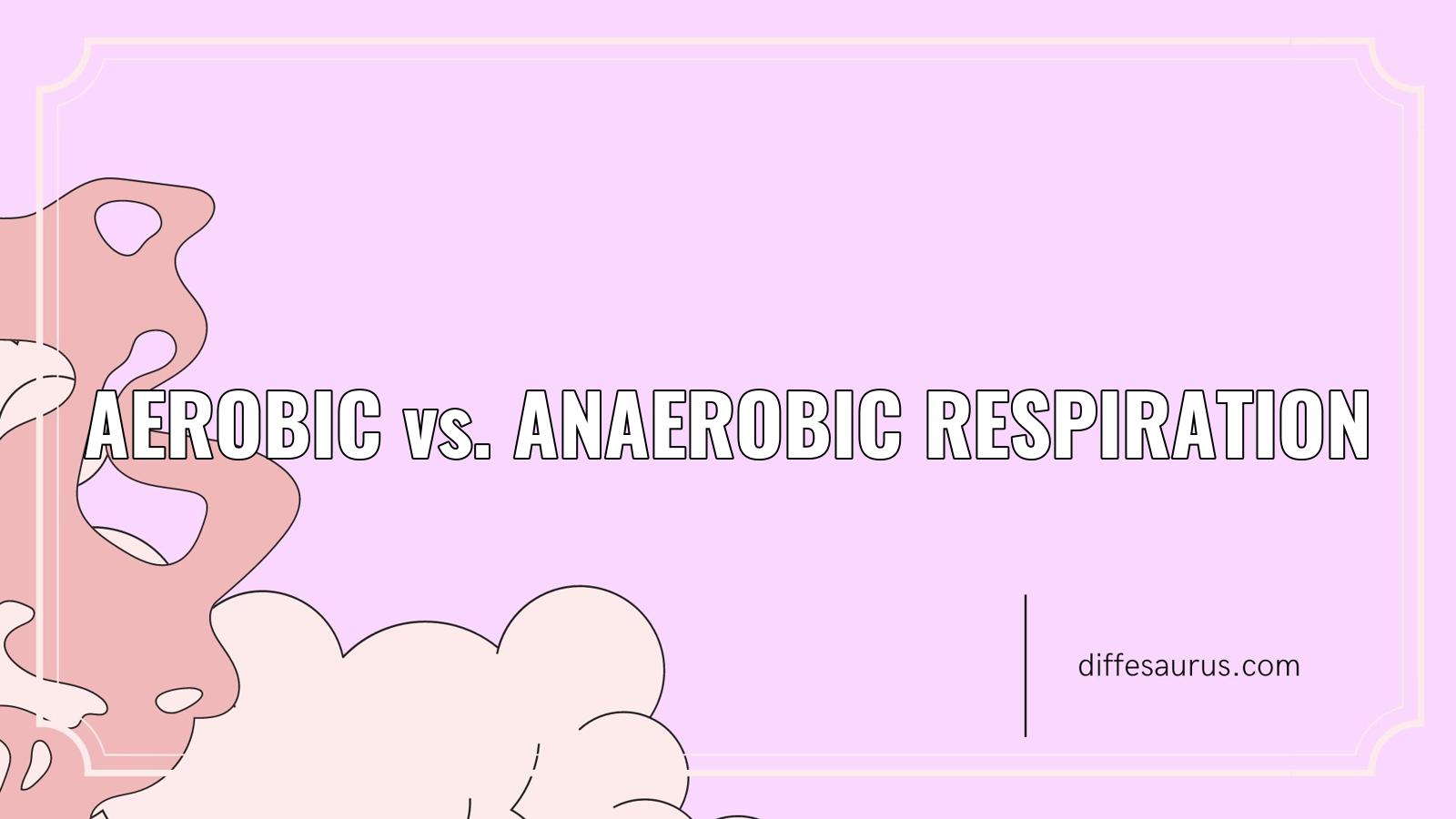Aerobic and Anaerobic are two different types of breathing. Anaerobic respiration can take place even if there is no oxygen. Carbondioxide, water, and large amounts of energy in the form of heat are the end products of aerobic respiration. Ethyl Alcohol and less amounts of energy are the end products of Anaerobic respiration.
In the presence of oxygen, aerobic respiration takes place. In the absence of oxygen, an anaerobic respiration takes place.
What are 3 differences between aerobic and anaerobic respiration?
We need to know the different modes of respiration in an organisms to answer this question. Respiration is the movement of oxygen from the outside to the cells inside the body. Aerobic and anaerobic respiration are the two main types ofspiration. Aerobic respiration is a process that takes place in the presence of oxygen and involves the transformation of chemical energy into oxygen-carrying particles. Anaerobic respiration is a process in which the excessive energy electron acceptor is not oxygen or pyruvate. The Krebs citric acid cycle and the cytochrome chain are referred to as the aerobic pathway The carbon dioxide, water, and plenty of energy-wealthyATP molecules are provided by the by-product of the initial anaerobic glycolysis step in those steps. A lot of these steps are referred to as cellular respiratory. Carbon dioxide and water are released from cells by the reaction of oxygen andglucose.
What is the main difference between aerobic and anaerobic respiration give one example of each?
Two forms of cellular respiration are aerobic and anaerobic. Most cells use both types of respiration, even though some may only use one type. Chemical processes, for example, in fermentation, occur outside of macro-organisms. respiration can be used to generate energy and eliminate waste products.
What are the differences between aerobic and anaerobic respiration Class 7?
In the presence of oxygen aerobic respiration takes place while in the absence of oxygen anaerobic respiration takes place. Aerobic respiration’s products are alcohol and CO2 while anaerobic respiration’s products are alcohol and CO2 Anaerobic is a fast process while Aerobic is slow. Aerobic respiration releases more energy than the other.
What are the differences between aerobic and anaerobic respiration name some organisms Class 10?
Aerobic respiration takes place during the process of incomplete oxidation of glucose. The exchange of gases between the environment and the organisms is called aerobic respiration. Exchange of gases is not possible in anaerobic respiration.

What is the difference between aerobic and anaerobic respiration write equation for both?
The process of anaerobic respiration is similar to aerobic respiration but without oxygen.
What is the difference between aerobic and anaerobic respiration ATP?
Anaerobic respiration uses the electron transport chain to synthesise the energy molecule ATP, unlike aerobic respiration, which uses oxygen.
What are 3 similarities between anaerobic and aerobic respiration?
The food is broken down to release energy in aerobic and anaerobic respiration The energy is released from the food when it is oxidation. In the absence of oxygen, aerobic respiration takes place while in the presence of oxygen, anaerobic respiration takes place. Aerobic respiration’s products are alcohol and CO2 while anaerobic respiration’s products are alcohol and CO2 Anaerobic is a fast process while Aerobic is slow. Aerobic respiration releases more energy than the other.
What are 3 examples of anaerobic respiration?
There is a process of propionic acid and carbon dioxide being created. The most common method used in Swiss cheese is this one. The formation of bubbles in the cheese is the result of the carbon dioxide gas produced during this process.

Which is better aerobic or anaerobic exercise?
Aerobic and bicyle exercise can be effective in a well-rounded fitness routine, but bicyle exercise can be more effective in fat loss.
What is the equation for aerobic and anaerobic respiration?
Anaerobic respiration does not require oxygen and uses less energy. In tissues where there is not enough oxygen to produce all the energy needed by aerobic respiration alone, it is useful to use this. Lactic acid is produced when anaerobic respiration takes place in the cell.
What is the difference between aerobic respiration and anaerobic fermentation?
There are two types of cellular respiration that are involved in the production of energy. Oxygen is required for aerobic and anaerobic fermentation. During the partial oxidation of pyruvate, NAD+ regeneration occurs in the electron transport chain.
What is the similarities and differences between aerobic and anaerobic respiration?
Aerobic respiration takes place in the presence of oxygen, while anaerobic respiration takes place without oxygen. Alcohol is the end product of aerobic respiration, while carbon dioxide and water are the end products of anther.
What is aerobic and anaerobic respiration with example?
Two forms of cellular respiration are aerobic and anaerobic. Most cells use both types of respiration, even though some may only use one type. Chemical processes, for example, in fermentation, occur outside of macro-organisms. respiration can be used to generate energy and eliminate waste products.
What is a difference between aerobic and anaerobic respiration?
Aerobic and anaerobic cellular respirations are the two types of cellular respiration. One occurs in the absence of oxygen and the other in the presence of oxygen.
What are the 5 differences between aerobic and anaerobic respiration?
We need to know the different modes of respiration in an organisms to answer this question. Aerobic respiration is a process that takes place in the presence of oxygen and involves the transformation of chemical energy into oxygen-carrying particles. Anaerobic respiration is a process in which the excessive energy electron acceptor is not oxygen or pyruvate. The carbon dioxide, water, and plenty of energy-wealthyATP molecules are provided by the by-product of the initial anaerobic glycolysis step in those steps.



